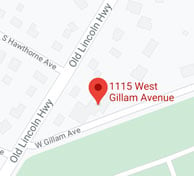Now is the time to slash energy costs with help from the Inflation Reduction Act. When it comes to installing a heat pump or another energy-efficient system, savings will depend on household income and qualifying equipment. While you'll have to wait a little longer to receive rebates, you can apply for tax credits any time through December 31st, 2025. Find out more details with these seven facts you should know about the IRA and heat pumps.
What We Know So Far About Rebates & Tax Credits
1. HVAC rebates are instant
From what we have learned, rebates will be point-of-sale or instant, in other words. When you're ready to install your new heat pump or ductless mini-split AC, your HVAC contractor will take the rebate amount off the proposal as if it's a discount. That means you won't have to wait weeks or months to get that money back.

2. Low-income households get the highest rebate amounts
For households with annual incomes below 80 percent of the area's median income, the High-Efficiency Electric Home Rebate Program (HEEHRP) will cover 100 percent of your heat pump costs up to $8,000. This is the maximum rebate available.
2. Moderate-income households get the second-highest rebate amounts
For households with annual incomes between 50 and 80 percent of the area's median income, the High-Efficiency Electric Home Rebate Program (HEEHRP) will cover 50 percent of your heat pump costs up to $8,000.
3. High-income households might not qualify for rebates
Since HEEHRP is designed to support low-to-moderate-income households, high-income households will likely not qualify for heat pump rebates. However, tax credits are available for all households including those considered high-income. The Energy-Efficient Home Improvement Tax Credit (25C) provides up to $2,000 for buying and installing a qualified heat pump. The heat pump system must meet or exceed the highest performance tier set by the Consortium for Energy Efficiency (CEE).
5. Rebates CANNOT be applied retroactively
Rebates are not available yet -- they are expected in "late 2023" and funds will depend on how each state rolls out its incentive program. That means if you install a heat pump or other qualifying equipment before then, you likely will not be able to retroactively apply the rebates once they become available.
6. Tax credits CAN be applied retroactively
Tax credits under the IRA are already available and anyone can apply for them, even retroactively. Under 25C, households may claim annually through 2032. So if you install a qualifying heat pump next year, you claim still claim the tax credits.
7. You can calculate your estimated rebate amount online
You can use this handy online savings calculator to see how much money you can get with the Inflation Reduction Act. Simply type in your zip code, household income, tax filing status, and household size. The calculator will provide you with rebate amounts (upfront discounts), available tax credits, and estimated annual savings. You can also see specific rebate amounts per type of equipment such as heat pumps and heat pump water heaters.
If you're ready to install a heat pump soon, don't wait! Even though rebates aren't available yet, equipment prices may be higher by the time they are, meaning you may end up spending more anyway. Plus, tax credits are already available.

To get started, click the button above and set up a free estimate.
If you live in the Delaware Valley/Greater Philadelphia area and would like to find comfort within your home, visit our website or give us a call at 215 - 245 - 3200 to learn more.



